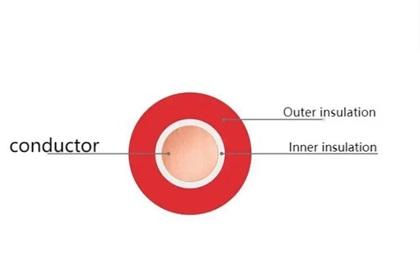1. Different structures:
Double-layer insulation refers to a structure formed by an outer insulation layer based on an inner insulation layer. This structure is often used in high-voltage power cables. A single layer has only one insulation layer. This structure is often used in low-voltage power cables. It can be seen that the difference between double-layer co-extrusion and single-layer lies in the number of insulation layers, and double-layer co-extrusion generally has higher density and tensile strength.
Main process flow:
1.1 Rod breakdown machine or Other wire drawing machine
1.2 Wire twisting machine or Wire stranding machine
1.3 Cable extrusion

2. Application differences:
Since different cables require different insulation properties and environmental requirements, double-layer insulation and single-layer insulation also have different applications. Double layer is generally used in higher voltage cables, such as power transmission in generators, transformers and cables, while single layer is often used in control cables, communication cables, automotive cables and some low voltage power cables.
3. Advantages and Disadvantages:
3.1. Advantages of double-layer insulation
Due to the two layers of insulation, double-layer co-extruded cable has better penetration resistance and durability. At the same time, it also has higher temperature and pressure tolerance, and is suitable for cable applications in high temperature and high pressure environments.
3.2. Disadvantages of double-layer insulation
Because its structure is more complex than single-layer insulation, the cost is relatively high. Additionally, in some cases, double-insulated cables may fail due to spalling between the inner and outer insulation layers.
3.3. Advantages of single layer
Single layer cable has a simple structure, so the production cost is lower, and the reliability is generally higher. Single-layer cables also have better mechanical properties and are less prone to aging and deterioration after long-term use, usually due to their tighter overall structure.
3.4. Disadvantages of single layer
Single layer cable lacks the protection of the outer insulation layer, so its resistance to penetration and durability may be relatively poor.
In general, double-layer insulation and single-layer insulation are different forms of cable insulation material structure. Double-layer insulated cables have higher penetration resistance and durability, while single-layer cables are simpler and have better mechanical properties. In actual applications, cable requirements will vary due to various factors such as different basic environments, power transmission requirements, and economic cost considerations. Therefore, appropriate cable insulation materials need to be selected according to different needs.
If you have needs for wire and cable manufacturing, welcome to contact us
NOTE: All rights reserved, Reprinting is prohibited without permission.
